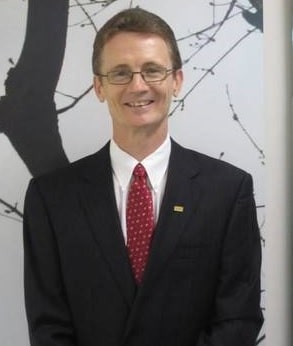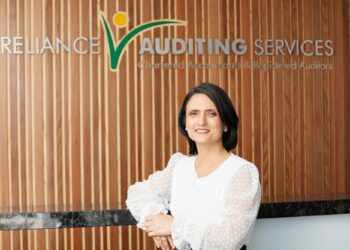A message from SuperConcepts
Self-managed superannuation funds continue to be the fastest growing segment of the superannuation market with more than one million Australians now a member of an SMSF.
The administration of SMSFs is becoming a large part of the revenue source for financial planning and accounting firms. Together with new licensing rules for accountants there is an opportunity to expand this even further.
Technology continues to play a big role in how it is both shaping the industry and influencing SMSF members on the type of services that they are seeking.
The 2015 SMSF Association Self-Managed Superannuation report identified that self-managed superannuation is now attracting a younger demographic. This younger age group are more tech savvy and will expect innovative SMSF administration solutions with real-time access to information.
For those providing services to SMSFs there will continue to be increasing pressures from SMSF clients for up-to-date information about their funds, investments, balances, performance, and compliance issues.
Software for accountants and administrators to look after SMSFs has come a long way from simply producing financial statements and a tax return. With the amount of automation, data feeds and on-line trustee access, accountants and administrators have a great opportunity to stand out from the crowd when it comes to SMSF administration and compliance services.
This is where the right technology plays a critical role and why we continue to support the industry with our wide range of flexible SMSF administration and compliance services, including our cloud based SMSF administration and compliance platform, superMate.
Our administration services not only support accountants and administrators with their compliance function, but encourage greater engagement with their clients. If you’re not investing in technology and expanding your service offering, other firms will be and your clients will find them.

Mark Ellem
SuperConcepts
The evolution of SMSF administration
Advancements in technology, the unstoppable growth of the SMSF sector and changes to legislation have seen the SMSF administration space transform significantly over the past 20 years.
Increasing automation has simplified the processes involved in the administration of an SMSF, which has simultaneously placed downward pressure on the price of SMSF administration services.
Clime director of private clients Michael Kloeckner says the software now driving the administration of SMSFs “did not exist 20 years ago”.
“That’s become the main change, and that path of technology has led to significant cost reductions,” he says.
Just five years ago, Heffron SMSF Solutions managing director Martin Heffron says, the establishment of an SMSF would require filling in a paper form downloaded from the web.
“Today it’s not done that way, there isn’t an exchange of paper in the purchasing phase and there’s going to be a further consolidation of where you go to do that,” he says.
In addition, Class Super chief executive Kevin Bungard says legislative changes have increased the complexity of administering SMSFs over the past two decades. While some of the changes have given SMSF trustees greater choices, it has also presented new challenges for SMSF administrators.
“Limited recourse borrowing, for example, has been a huge change in terms of something you can do, but it obviously adds to the complexity of administrating an SMSF if they have those sorts of structures,” says Mr Bungard.
“On top of that you’ve also got products that have come to market specifically aimed at SMSFs, and some of those have created some interesting administration challenges as well in terms of term deposit platforms and products like equity leveraging products for using limited recourse borrowing with shares.”
With the increasing growth of the SMSF sector, there has also been further specialisation within the SMSF administration, Mr Bungard notes.
There are now more businesses purely focused on providing administration, as opposed to providing it as an overall generic accounting service at a small firm.
“The interesting thing is, what hasn’t happened is that [these] administration specialists, to date, haven’t really taken a large percentage of the market,” he adds.
“Despite the growth and demand for administration, most of it is still being done by the accountants as part of a broader offering that their practice is offering to clients.”
Another aspect of the administration industry that has changed, according to Praemium commercial director Andrew Varlamos, is the collaboration between accountants and advisers.
Praemium senior business analyst Leah Winterton says one of the traditional challenges with SMSF administration was the fact accountants and advisers used different systems that didn’t speak to each other.
“That’s where things have changed a lot in the past few years,” Ms Winterton explains.
Mr Varlamos says software and platform admin providers have worked hard in recent years “to provide an open architecture approach to enable data to move between different systems and satisfy the different parties involved in looking after the SMSF”.
This, he says, has seen significant efficiency benefits, and improved the accuracy of information.
The role of automation
Over the next few years, MGD Wealth chief executive John Barton says one of the main challenges for SMSF administrators, big or small, will be managing the expectations of clients for high-quality service as SMSF administration services become increasingly commoditised.
This will mean balancing professional standards and diligence with increasing automation technology and outsourcing, he explains.
“Being the cheapest is not necessarily what investors ultimately want; although in the short term it may feel like what they want,” says Mr Barton.
Mr Heffron believes SMSF administration may see a “disaggregation of services”.
“At the moment, you’ve just got an SMSF administration service which is just a bundled suite of capabilities really; it’s the lodgement of the tax return, it’s doing double entry bookkeeping, it’s the consolidation of data feeds or the management of data feeds,” adds Mr Heffron.
All these types of tasks and capabilities, at the moment, are wrapped up together and usually sold as one service with one fee.
“I think technology gives you the opportunity to disaggregate those services,” he says.
“So you might have a small accountant on the corner that has clients who have SMSFs and, rather than provide a holistic service, they might outsource bits and pieces of it rather than all of it.”
The SMSF sector is also likely to see greater use of big data and data analytics, according to David Smith, the director and founder of consultancy firm Smithink.
Utilising big data, he explains, could enable providers to offer intelligence to trustees about the performance of their SMSF and how they might be able to fine-tune the performance to better optimise outcomes.
Some of the large SMSF administration software providers, he says, are “building big data bases of SMSFs that could be mined to unblock intelligence about how funds are performing, and what are the key factors that are being used to drive better-than-average performance”.
The development of SMSF administration technology is only at the “half way” point, but Mr Kloeckner believes it’s unlikely the technology will reach the point of no longer requiring an “eagle eye” for quite some time.
“The computer software only goes to a certain level [at the moment] and still requires checks. With any SMSF financial statements, one needs to have an SMSF-licensed audit,” he says.
“In terms of legislation, that’s not going anywhere soon.”

“Being the cheapest is not necessarily what investors ultimately want; although in the short term it may feel like what they want.”
Consolidation of the industry
One of the significant areas of debate, regarding SMSF administration, is what will happen with consolidation in the industry.
The actions and direction taken by the large institutions in the SMSF administration space could largely influence factors such as pricing.
BGL chief executive Ron Lesh believes technology will actually do the institutions or larger administration providers a disservice rather than provide a competitive advantage, and sees them as little threat to the small accounting firms.
“Our view is that more people are going to end up doing their own administration because of the automation that’s coming through the software. It’s just going to make it so easy for [SMSF trustees] that they’re not going to need an administrator,” says Mr Lesh.
Improvements in SMSF administration, he adds, are more beneficial for smaller accounting firms as the software is able to do 80-90 per cent of the administration work, so the firm is able to offer other services alongside it.
“If you’ve got the automation processes in place, I think it’s pretty easy for a smaller administrator to be able to do the fund at a smaller cost and sell other services to their client around that,” he explains.
“It’s not the smaller administrators from what we’re seeing, being consolidated, it’s the larger administrators that have only got one business, and that’s SMSF administration,” he says.
Depending on the level of enhancement with administration platforms, Mr Smith also agrees there could potentially be SMSF trustees “bypassing the administration companies and actually doing the administration themselves using these automated systems”.
In Mr Bungard’s opinion, however, the banks have entered the SMSF administration space in a “very considered way”, and have been developing the technology part of their offerings for years.
“Technology has allowed them to enter this space more competently,” he says.
“They’re coming to market with offerings that come with a level of technology sophistication and scalability, as part of the solutions.”
The involvement of the large intuitions in this space, he believes, will raise service levels as their offerings provide mobile, access, easy ways to access products, easy ways to access reporting and will involve various parties that need to be involved.
“What this does is it raises the bar for anyone who’s doing annual processing. [Their service] is going to look anaemic next to the offerings we’ve seen coming from the large institutions,” says Mr Bungard.
“As an accountant, you will need to make sure that you’ve got the technology that allows you to compete with the sort of offerings that these large players are going to bring to market.”
SuperConcepts chief executive Natasha Fenech says institutions will further invest in technology innovation to push down costs.
“Investment in technology also means we’re able to provide a range of services that our customers can select from, whether it’s different elements of fund administration or access to accounting software,” says Ms Fenech.
The institutions, she says, will also look to provide additional insights through the administration services, such as updates on an individual trustee’s eligibility for the Age Pension and other opportunities that will benefit the fund’s performance and financial position.
In part two of this series, SMSF Adviser will look at how the regulatory framework for the SMSF sector and the wider superannuation industry may change in response to improvements in technology.


